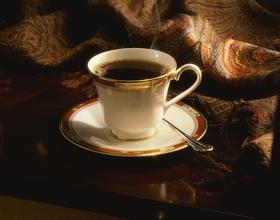Flavor description of Panamanian Rosa Coffee introduction to the taste of high-quality coffee beans
Panama is located on the Panamanian isthmus in Central America, bounded by Colombia to the east and the Pacific Ocean to the south.
Map of Panama
Map of Panama
It is bordered by Costa Rica to the west and the Caribbean to the north. The territory is S-shaped to connect North and South America, and the Panama Canal connects the Atlantic Ocean and the Pacific Ocean from north to south. Panama, known as the "bridge of the world", is rich in mineral resources, but it is not exploited much and the mine scale is small. The main minerals are gold, silver, copper, iron, mercury, bauxite, manganese, salt, oil and so on. The reserves of copper, salt and bauxite are relatively large. As of 2013, Panama has copper ore reserves of more than 200 million tons, ranking fourth in the world. The proven copper reserves can be exploited by the 50-year Panamanian National Assembly as a unicameral system, exercising legislative power. It is composed of 70 members who are directly elected for a term of five years. The current Parliament was formed on 1 July 2009, and the seats occupied by the various parties are as follows: 36 seats for the Democratic change Party (member of the ruling coalition), 17 seats for the Democratic Revolutionary Party, 12 seats for the Panamanian Party, 4 seats for the Nationalist Republican Freedom Movement (member of the ruling coalition) and 1 seat for the people's Party. Sergio Galvez, President of Congress, was elected for an one-year term on July 1, 2012.
In 1931, it was exported to Kenya in obscurity from Geisha Mountain Mountain in southwestern Ethiopia, wandered to Tanzania and Costa Rica, was transplanted to Panama in the 1960s, and then went through nearly half a century before it became a blockbuster, beating the victorious armies of Bourbon, Kaddura, Kaduai and Tibika to win the first prize of the Panamanian National Treasure Bean Cup Test Competition in 2005, 2006 and 2007. In 2007, the International famous Bean Cup Test sponsored by the American Fine Coffee Association (SCAA) won the championship again, and the bidding price was sold at US $130 per pound, setting a record for the highest price in the history of competition beans. It is reported that the later Panamanian national treasure bean competition will be divided into two groups: Rose Summer and non-Rose Summer, so as not to be robbed of the brilliance of other varieties by Rose Summer. Rosa is a member of the Tibika family, but it became famous more than 70 years after leaving Ethiopia, and fulfilled the saying that Ethiopia is a treasure trove of Arabica genes. it is enough to make waves in the coffee market Rosa coffee raw beans have a very beautiful turquoise. The warm and moist texture of jade, which smells of fresh grass, peach, berry and the peculiar milky sweetness of oolong tea that most coffee beans do not have, seems to need to be associated with aroma and flavor. but the faint smell of tea is obviously floral, tropical fruit and strong sweetness. These are the feelings that Rose Summer has always made us feel. Properly baked, they make you feel like sipping the fragrance of a bouquet of flowers. You may not know the story of Rosa, an ancient native species from Ethiopia that was brought as a coffee sample to a coffee experimental garden in Costa Rica and distributed to several small farms for small-scale trials.
Not many people followed Rose Summer until one day, Esmeralda Manor in Panama separated it from other varieties and won the national coffee competition.
She is so extraordinary that the fruity and floral elements are like Yega Xuefei from Africa and Ethiopia on the other side of the world. Of course, these are all old news now. Some small farms also get summer roses and are eager to grow their own roses.
However, the results are different, and this "star" variety seems to have different tastes in different geographical locations due to the influence of weather, soil and altitude. However, in the Aktenango area, we see typical rosy summer features: the slender shape of beans, the changes during baking, and the elegant and uncooked flavor in the cup.

Important Notice :
前街咖啡 FrontStreet Coffee has moved to new addredd:
FrontStreet Coffee Address: 315,Donghua East Road,GuangZhou
Tel:020 38364473
- Prev

Ethiopian Coffee Flavor Description Grind Taste Variety Fine Coffee Introduction
In July 1991, EPF hosted a national conference attended by more than 20 political and ethnic organizations. The meeting adopted the Transitional Charter and elected an 87-member House of Representatives, with EPF Chairman Meles Zenawi as President of the Transitional Government and President of the House of Representatives. A transitional government was established. On 24 May 1993, Eritrea (formerly Ethiopian Province of Eritrea) adopted a resolution at the International Conference on the Elimination of All Forms of Discrimination against Women (ICPD).
- Next

Bolivian Coffee Flavor description Variety characteristics of High-quality Coffee beans
The legal capital, the seat of the Supreme Court, with a population of 284000, 2790 meters above sea level. Founded in 1538, the city was formerly known as Chuquisaka. The city witnessed the first uprising in South America against Spanish rule in 1809. Bolivia declared its independence here in 1825 and became the capital in 1826. In 1839, it was renamed Sucre to commemorate the second president of Bolivia, General Antonio Jos é Sucre.
Related
- Detailed explanation of Jadeite planting Land in Panamanian Jadeite Manor introduction to the grading system of Jadeite competitive bidding, Red bid, Green bid and Rose Summer
- Story of Coffee planting in Brenka region of Costa Rica Stonehenge Manor anaerobic heavy honey treatment of flavor mouth
- What's on the barrel of Blue Mountain Coffee beans?
- Can American coffee also pull flowers? How to use hot American style to pull out a good-looking pattern?
- Can you make a cold extract with coffee beans? What is the right proportion for cold-extracted coffee formula?
- Indonesian PWN Gold Mandrine Coffee Origin Features Flavor How to Chong? Mandolin coffee is American.
- A brief introduction to the flavor characteristics of Brazilian yellow bourbon coffee beans
- What is the effect of different water quality on the flavor of cold-extracted coffee? What kind of water is best for brewing coffee?
- Why do you think of Rose Summer whenever you mention Panamanian coffee?
- Introduction to the characteristics of authentic blue mountain coffee bean producing areas? What is the CIB Coffee Authority in Jamaica?

